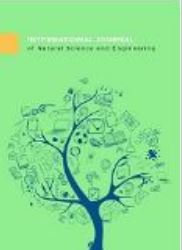The Effect of Traditional Drying on Salted Fish Quality
DOI:
https://doi.org/10.23887/ijnse.v6i1.41623Keywords:
Traditional Drying, Salted Fish, SunlightAbstract
Fish is a source of animal protein that is widely consumed by the public. With a high protein content, fish quickly undergo a post-harvest decay process if it is not directly processed into food. In general, what causes fish to rot quickly are bacterial and chemical factors. as for the method used in this study is a qualitative research approach. The purpose of this study was to determine the effect of drying on the quality of fish. The results showed that the drying time of fish depends on the weather and also the size of the fish. Drying using sunlight is widely used because heat energy is abundant and the equipment used is inexpensive. during the drying process cleanliness must be monitored. This study also aims to determine the difference between drying fish using salt and not using salt. The parameters observed were the quality of the fish starting from the texture, color, smell, and content contained in the fish after drying. Drying salted fish is widely available in Indonesia, on a national scale salted fish is one of the fishery products that has an important position. The technique of drying salted fish using sunlight is a common technique carried out in Indonesia with the position of the fish being hung and then placed outside or under the sun.
References
Anwar, C., Irmayanti, I., & Ambartiasari, G. (2021). Pengaruh Lama Pengeringan terhadap Rendemen, Kadar Air, dan Organoleptik Dendeng Sayat Daging Ayam. Jurnal Peternakan Sriwijaya, 10(2), 29–38. https://doi.org/10.36706/JPS.10.2.2021.15730. DOI: https://doi.org/10.36706/JPS.10.2.2021.15730
Ayundra Putri, M., Arsil, Y., Marlina, Y., & Roziana, R. (2022). Sensory Evaluation And Protein Analysis Of Catfish Stick. JPK : Jurnal Proteksi Kesehatan, 11(1), 24–34. https://doi.org/10.36929/jpk.v11i1.444. DOI: https://doi.org/10.36929/jpk.v11i1.444
Azizah, N., Asfiyanti, N. A., Hasibuan, M., Jannah, M., Gustari, R., & Hasibuan, R. S. (2022). The Effect of Fish Thickness on Dryness Level and Time for Drying Fish. International Journal of Natural Science and Engineering, 5(3), 114–119. https://doi.org/10.23887/ijnse.v5i3.41891. DOI: https://doi.org/10.23887/ijnse.v5i3.41891
Bau, F. C., Nina, S. U., & Antuli, Z. (2021). Pengaruh Lama Pengeringan Terhadap Kualitas Kimia Dan Biologis Ikan Teri Asin Kering (Stolephorus sp.). Jambura Journal of Food Technology, 3(2), 94–101. https://doi.org/10.37905/jjft.v3i2.9101. DOI: https://doi.org/10.37905/jjft.v3i2.9101
Delima, R., Sahira, S., Sumiroyani, S., Kamelia, K., Reskiana, R., Rahmi, K. A., & Marta, E. (2022). The Impact of Using Salt on Drying Rate of Fish. International Journal of Natural Science and Engineering, 5(3), 87–95. https://doi.org/10.23887/ijnse.v5i3.41314. DOI: https://doi.org/10.23887/ijnse.v5i3.41314
Hatta, M., Syuhada, A., & Fuadi, Z. (2019). Sistim pengeringan ikan dengan metode hybrid. Jurnal Polimesin, 17(1), 9–18. https://doi.org/10.30811/jpl.v17i1.666. DOI: https://doi.org/10.30811/jpl.v17i1.666
Ikhsan, M., & Muhsin, P. (2018). Pengaruh Variasi Suhu Pengering terhadap Mutu Dendeng Ikan Lele Dumbo (Clarias gariepinus). Jurnal Pendidikan Teknologi Pertanian, 2(2), 114. https://doi.org/10.26858/jptp.v2i2.5166. DOI: https://doi.org/10.26858/jptp.v2i2.5166
Juwita, A. I., & Rusli, A. (2018). Inovasi Oven Pengering Ikan Hemat Energi Untuk Masyarakat Usaha Ikan Asin Kabupaten Barru. Jurnal Dinamika Pengabdian, 3(2), 202–210. https://doi.org/10.20956/jdp.v3i2.4251.
Kambey, J. L., Farrell, A. P., & Bendell-Young, L. I. (2001). Influence of illegal gold mining on mercury levels in fish of North Sulawesi's Minahasa Peninsula,(Indonesia). Environmental Pollution, 114(3), 299–302. DOI: https://doi.org/10.1016/S0269-7491(01)00163-4
Kurniawan, R., Luthfi, M., & Wahyunanto, A. (2014). Karakterisasi Luas Permukaan Bet ( Braunanear , Emmelt dan Teller ) Karbon Aktif dari Tempurung Kelapa dan Tandan Kosong Kelapa Sawit dengan Aktivasi Asam Fosfat. Jurnal Keteknikan Pertanian Tropis Dan Biosistem, 2(1), 15–20. https://doi.org/10.32734/jtk.v6i1.1564. DOI: https://doi.org/10.32734/jtk.v6i1.1564
Laitupa, I. W. (2019). Pemanfaatan Bahan Pangan Kaya Kalsium (Ca) Sebagai Sumber Fortivikan pada Olahan Ikan Tuna Kering Kayu Kaleng. Agrikan: Jurnal Agribisnis Perikanan, 12(2), 228–231. https://doi.org/10.29239/j.agrikan.12.2.228-231. DOI: https://doi.org/10.29239/j.agrikan.12.2.228-231
Oktarina, A. (2016). Program Corporate Social Responsibility Perbankan Syariah Di Bidang Pengolahan Ikan Sebagai Alternatif Pemberdayaan Umkm Jangka Panjang. Al- Intaj, 2, 121–132.
Rahayu, W., Herpandi, H., & Widiastuti, I. (2018). Pengaruh Penambahan Soda Kue dan Rempah-Rempah Terhadap Karakteristik Ikan Kering Rendah Garam. Jurnal FishtecH, 7(1), 60–68. https://doi.org/10.36706/fishtech.v7i1.5981. DOI: https://doi.org/10.36706/fishtech.v7i1.5981
Sari, F. Y., Pranoto, Y. S., & Purwasih, R. (2020). Analisis usaha ikan asin (Studi kasus Desa Rebo Kecamatan Sungailiat Kabupaten Bangka). Journal of Integrated Agribusiness, 2(1), 20–36. https://doi.org/10.33019/jia.v2i1.1489. DOI: https://doi.org/10.33019/jia.v2i1.1489
Sumarno, T., Agustini, T. W., & Bambang, A. N. (2020). Strategi Pengembangan Mutu Ikan Asin Jambal Roti (Ikan Manyung) di Karangsong Kabupaten Indramayu. Jurnal Pengolahan Hasil Perikanan Indonesia, 23(2), 196–205. https://doi.org/10.17844/jphpi.v23i2.32040. DOI: https://doi.org/10.17844/jphpi.v23i2.32040





